Find Your Quiet Path: How to Choose Mindful Hiking Trails
Chosen theme: How to Choose Mindful Hiking Trails. Discover how to select calm, restorative routes that support presence, ease, and wonder. Wander with intention, breathe deeper, and join our community of thoughtful trail seekers by sharing your favorite mindful paths and subscribing for new ideas.


Sensory Ease Over Spectacle
Favor balanced stimuli: soft light, open sightlines, and minimal sudden noise. A modest overlook can nourish more than a famous viewpoint if your senses remain unhurried, comfortably engaged, and supported by gentle, repeating natural patterns along the way.
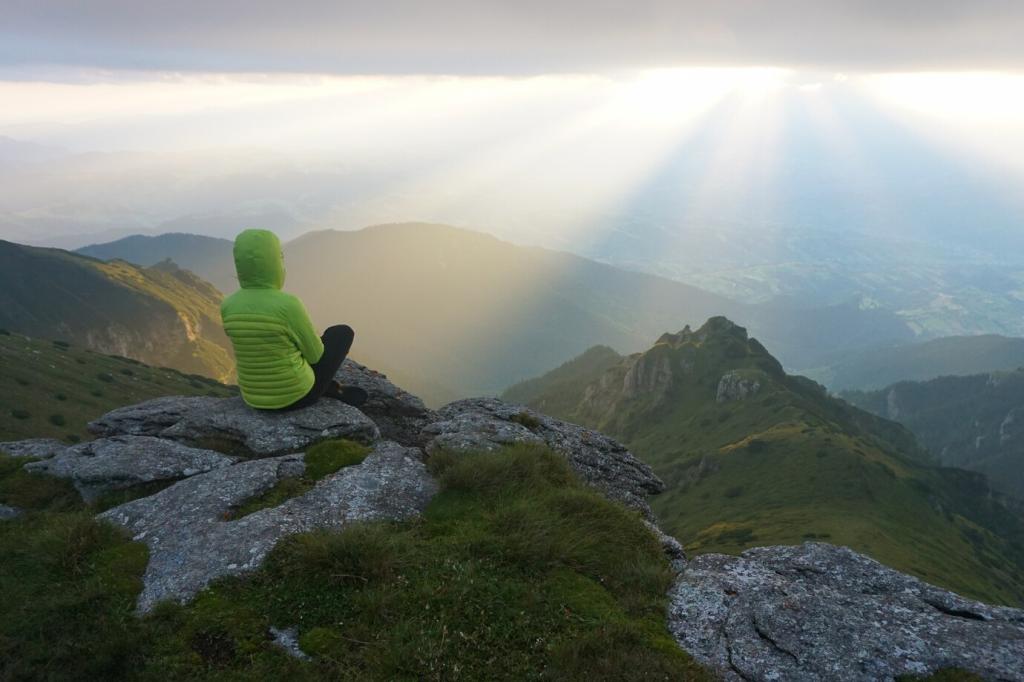
Gentle Terrain and Predictable Grades
Seek steady elevation and well-marked junctions to lower cognitive load. Short switchbacks, clear blazes, and absence of scrambling free attention for noticing breath, footfall, temperature shifts, and the subtle music of leaves, water, and wind.

Nature’s Calming Features
Look for creeks that murmur, meadow edges that sway, and mixed forests that filter light. Smooth rocks or tucked benches offer dignified pauses, turning short rests into meaningful presence without disrupting your mindful rhythm or momentum.
Research Before You Lace Up
Contour spacing reveals effort: wider gaps suggest gentler grades, ideal for steady breathing. Trail junction density hints at decision fatigue. Water lines, forest cover, and aspect indicate shade, breeze, and temperature—key ingredients for a mindful, unhurried experience.
Research Before You Lace Up
Consult heatmaps, parking cams, ranger updates, and permit systems. Comment threads that mention bottlenecks signal you to choose alternate loops or side spurs, preserving spaciousness, unbroken attention, and the meditative feel that mindful hiking invites.
Research Before You Lace Up
Predictable comfort supports presence. Shoulder seasons, overcast mornings, and post-rain clarity can hush popular trails. Check wind forecasts for rustling soundscapes, and avoid freeze-thaw mud to prevent trail damage while maintaining a respectful, easeful walking cadence.
Match Trail Difficulty to Your Nervous System
Choose a difficulty that meets you where you are today, not where you were last season. Gentle routes maintain steady breathing, encourage soft attention, and make room for noticing texture, scent, and emotion without strain or pressure.
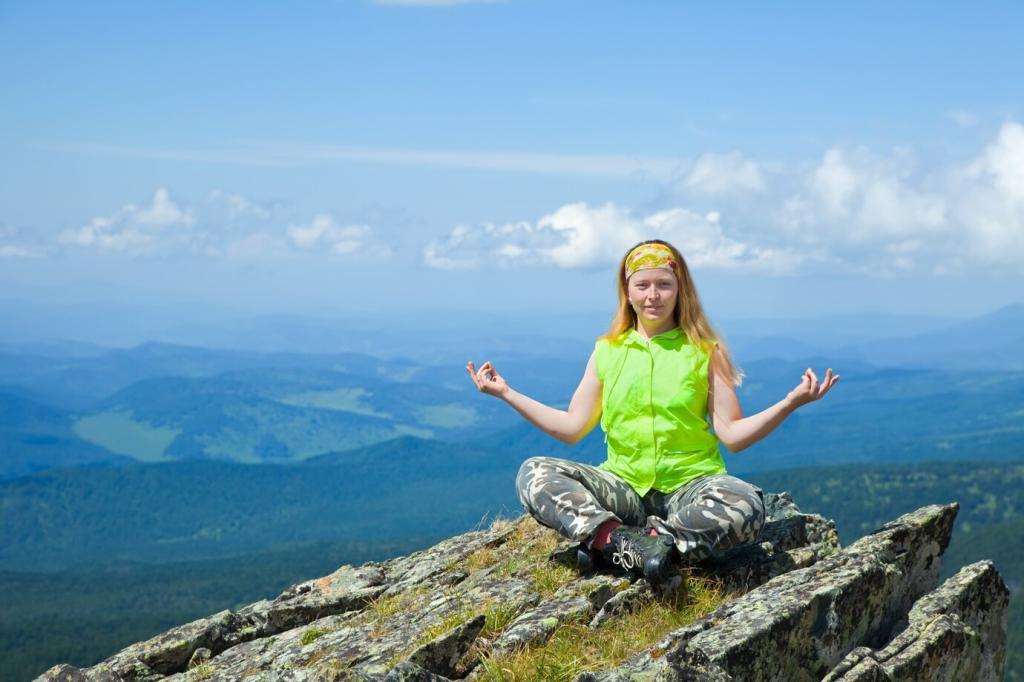
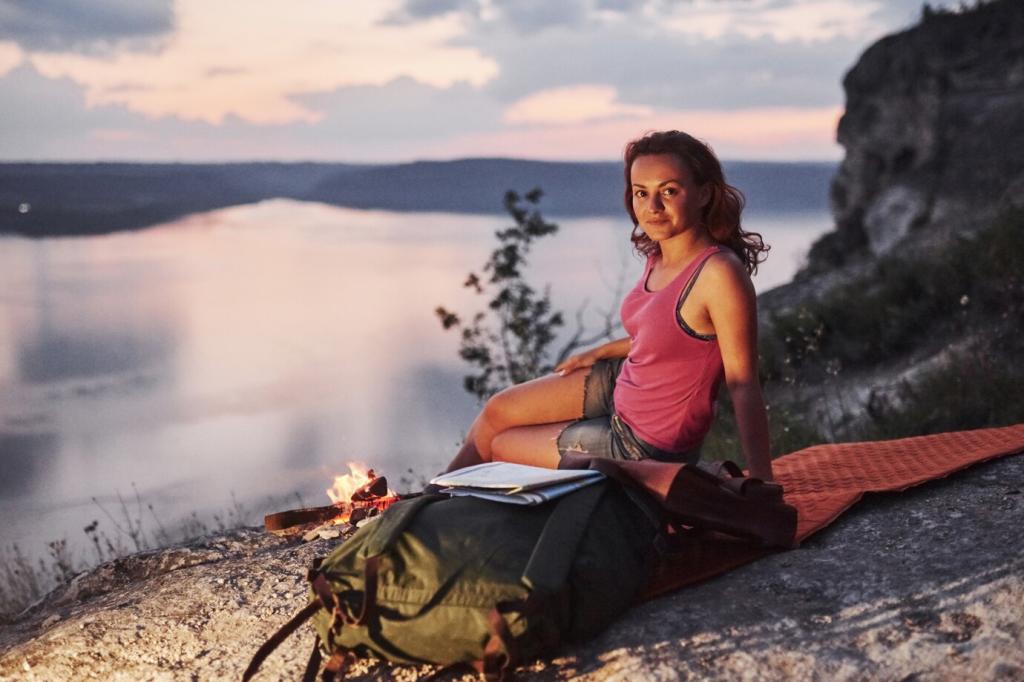
Match Trail Difficulty to Your Nervous System
Trailheads with bathrooms, shade, and clear signage reduce tension. Loops or lollipop routes offer early turnarounds if needed. Knowing there is a gentle exit keeps the nervous system at ease and your focus comfortably anchored.
Timing, Pace, and Intention
Arrive near sunrise on weekdays, during gently overcast weather, or just after light rain. Birds sing, trails soften, and crowds thin—creating room for unhurried steps, deeper breath, and the kind of listening mindfulness thrives on.
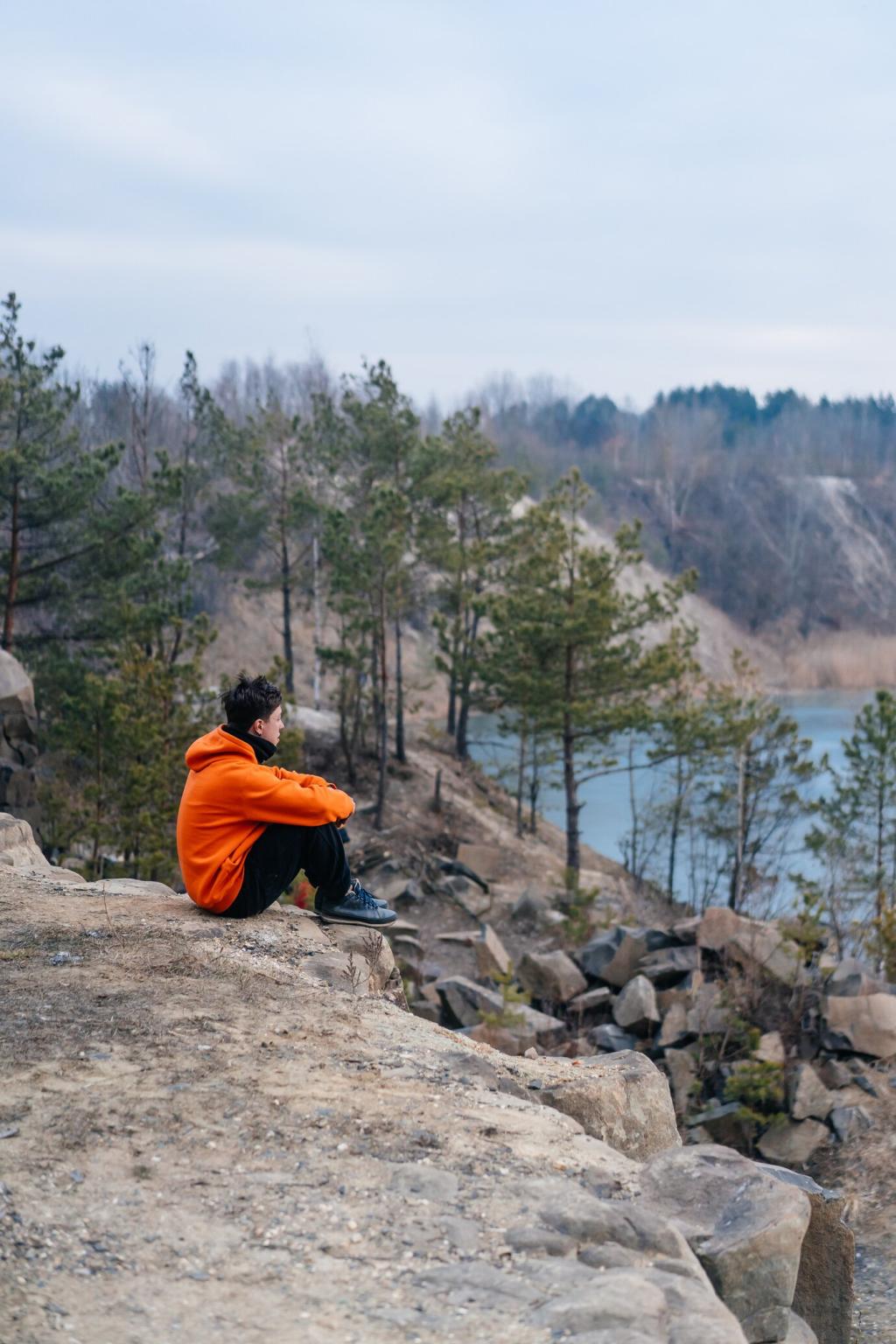

Timing, Pace, and Intention
Treat speed like a dial rather than a target. Slow enough to notice breeze on forearms, quick enough to stay warm. Build micro-pauses at landmarks—bridge, bend, big cedar—to reset posture, acknowledge gratitude, and recommit to attention.
Ethics as Mindfulness
Leave No Trace, Leave More Space
Stay on durable surfaces, step aside for wildlife and fellow hikers, and avoid muddy trail widening. Your choices preserve habitat, protect soundscapes, and keep future walkers able to practice mindful attention on intact, welcoming paths.
Soundscape Etiquette
Lower voices, silence notifications, and skip external speakers. Natural sound layers—water, wind, insect hum—support awareness. Invite companions to try a two-minute quiet walk and share what each person heard or felt afterward.
Technology With Boundaries
Download offline maps, then use airplane mode. Establish a simple emergency plan while keeping the screen pocketed. Intentional boundaries let nature lead your attention instead of alerts, preserving the calm you came to cultivate.
Field Stories: Mindful Choices in Action
Maya’s Creekside Reset
After a tense week, Maya picked a low-elevation creek loop with benches every mile. The water’s rhythm matched her steps. She returned lighter, grateful, and eager to share the route with our community.
Jin’s Lunch-Break Loop
Jin chose a city preserve with wide paths, shade, and minimal junctions. Thirty mindful minutes—two birdsongs, one breeze, one poem scribbled—turned an overstuffed day into something workable, kind, and surprisingly clear.
A Family’s First Quiet Sunset
One family selected a short hill with a west-facing bench. They agreed on soft voices and a five-minute stillness. The toddler counted clouds; the parents exhaled together. Everyone walked down calmer than they started.
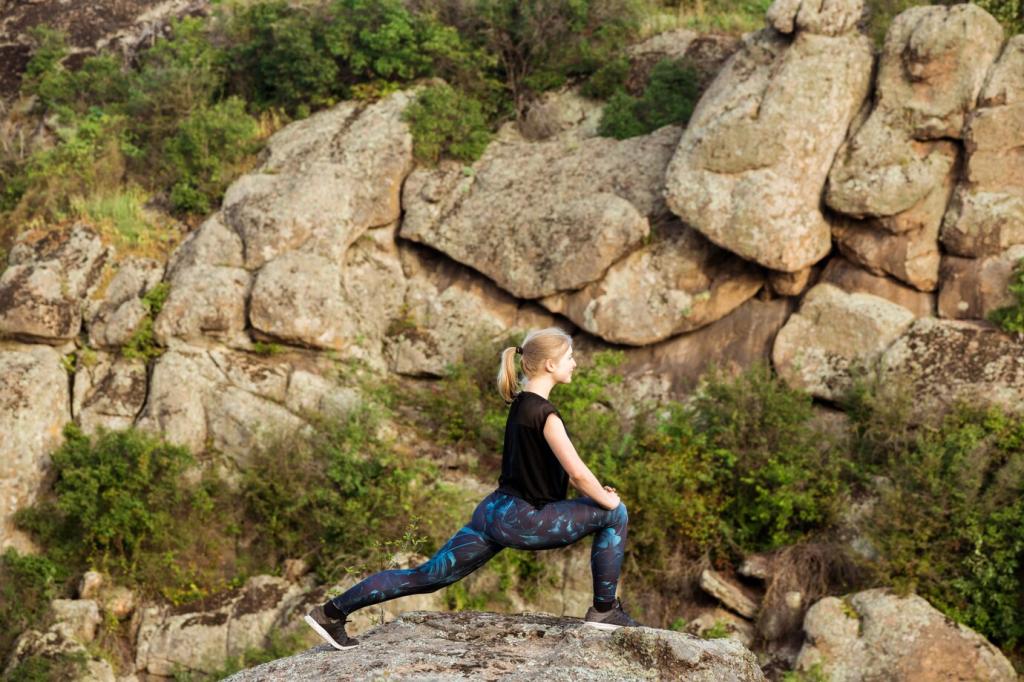
Start a Trail Sensory Notebook
After each walk, jot sound, light, scent, and texture notes, plus a one-to-ten calm score. Patterns will guide future choices. Tell us your latest finding to inspire someone’s next peaceful outing.
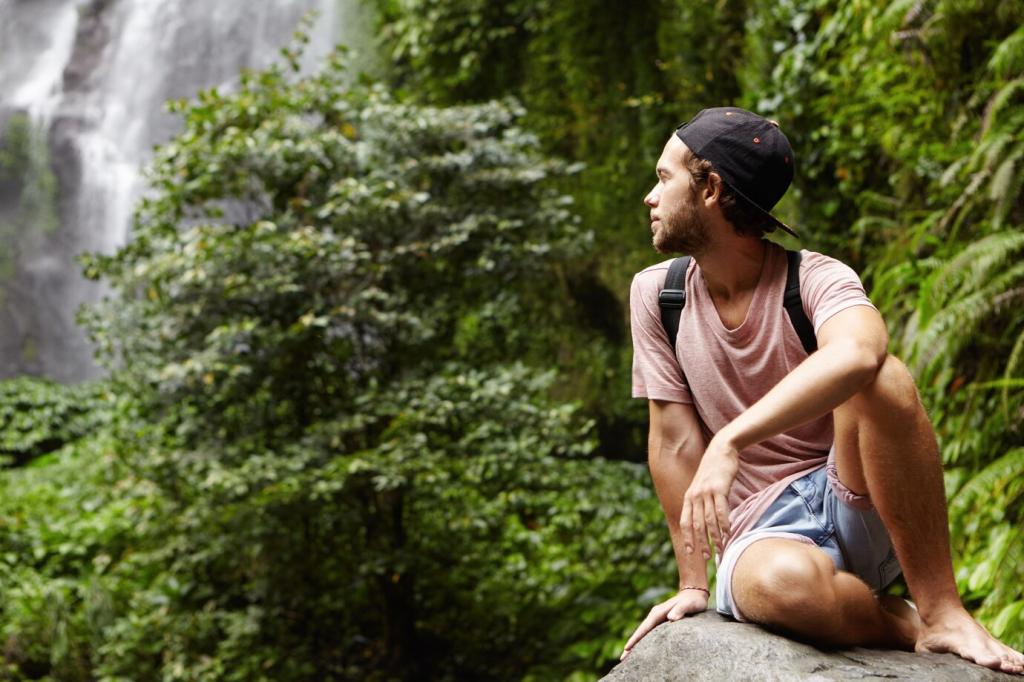
Share a Quiet Corner
Comment with a favorite gentle loop, creek bend, or meadow edge—no geotag pressure, just practical hints. What time felt calmest? Which features supported presence? Your tips help our community tread kindly and attentively.
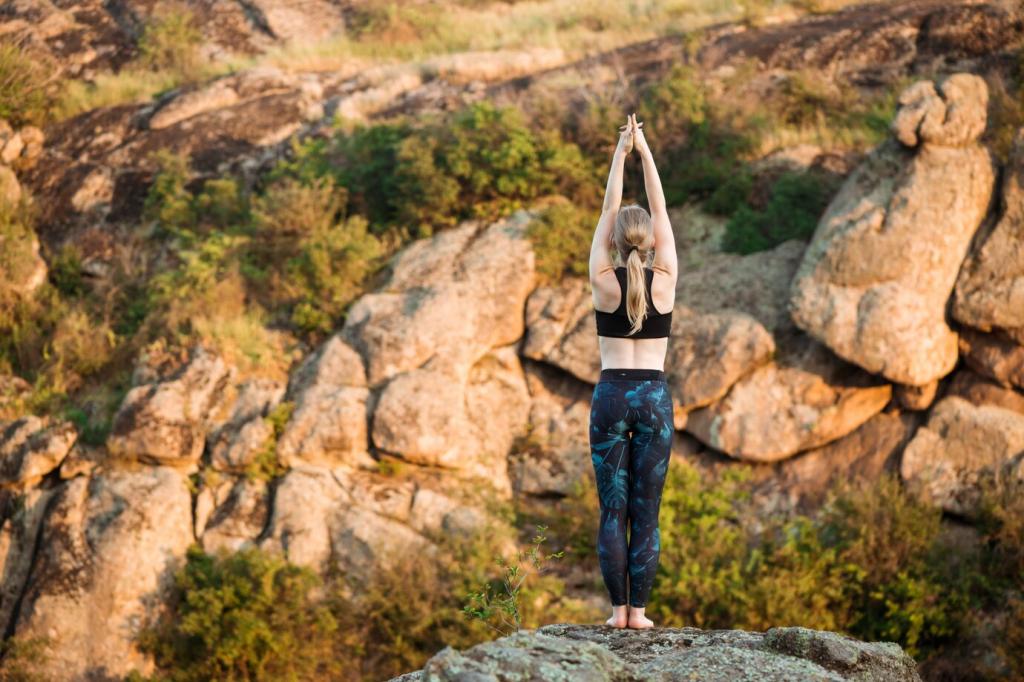
Subscribe for Weekly Mindful Trail Picks
Get curated suggestions tailored to season, weather, and accessibility, plus intention prompts and reader stories. Subscribe today, then reply with your location so we can include thoughtful options near your home terrain.
